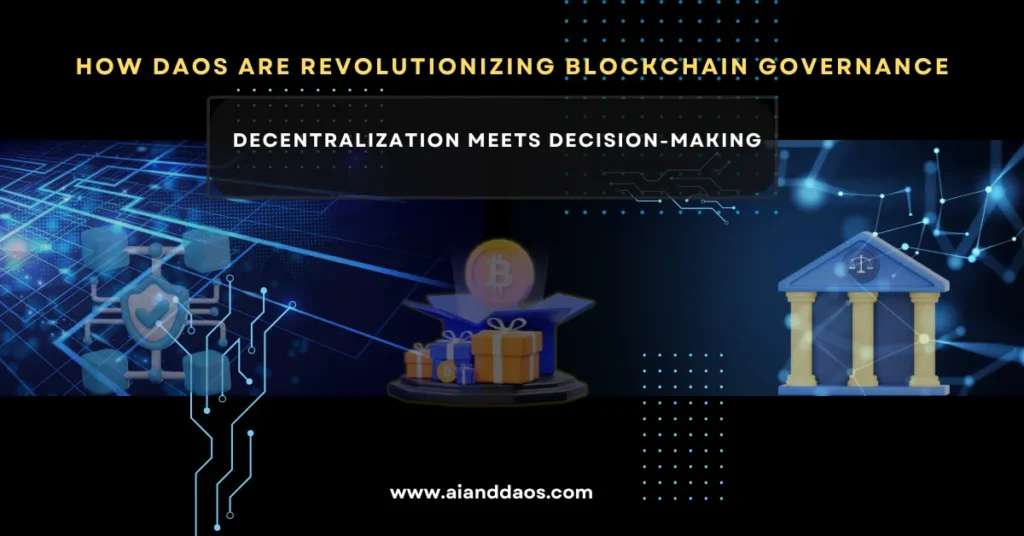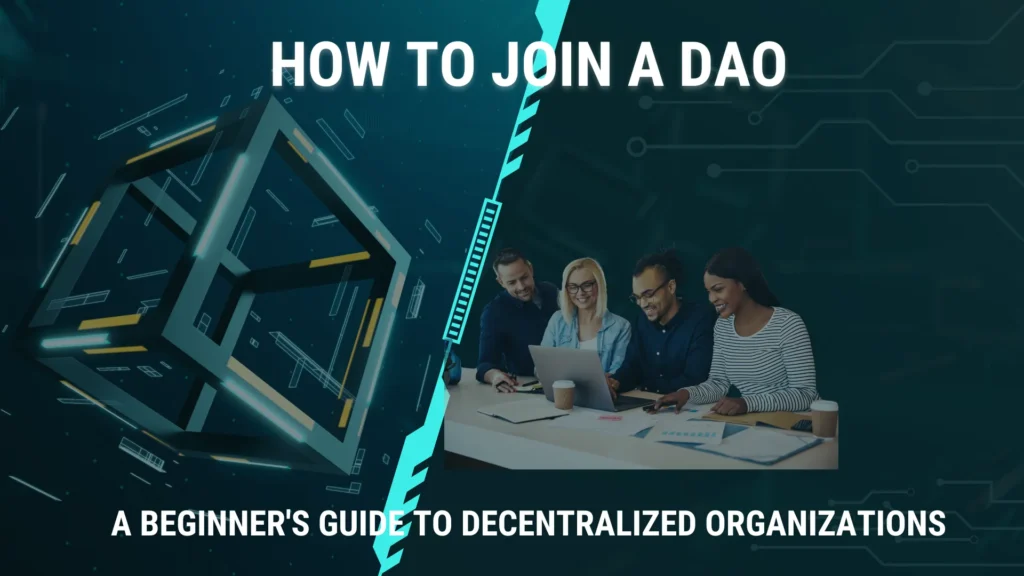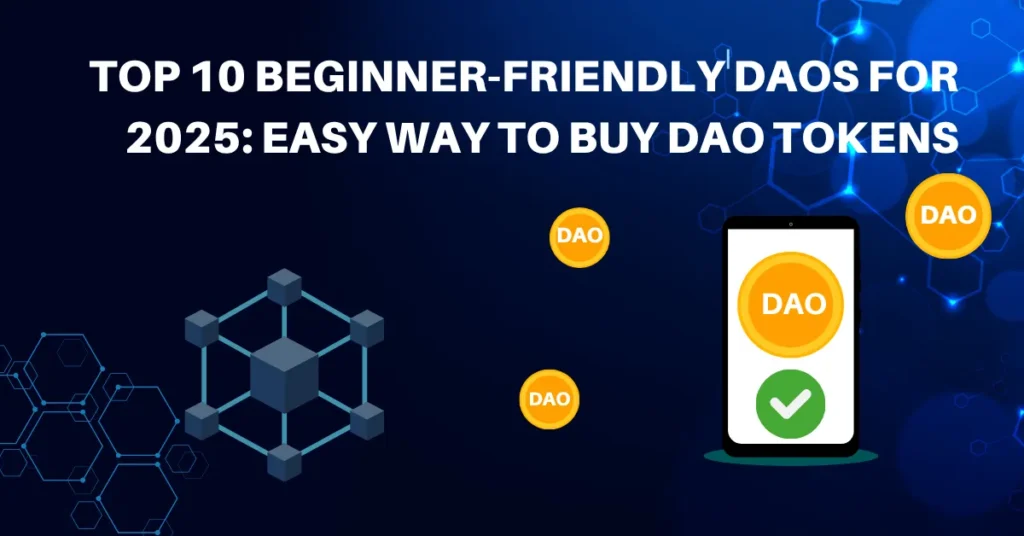What is a Decentralized Autonomous Organization (DAO)?
Ever wish there was a better way to work with people, without all the hierarchy and gatekeeping? That’s where DAOs come in. A Decentralized Autonomous Organization (DAO) is a new type of online group that operates without a central authority, thanks to smart contracts on the blockchain. The rules are open, the decisions are shared, and anyone can take part.
In a DAO, members can vote, fund ideas, or even help steer the project’s overall direction. Everything happens transparently, and your role is based on what you contribute, not on titles or job descriptions. You’ll see DAOs running everything from crypto protocols to creative communities.
Sure, they’re not perfect. Coordinating large groups, maintaining security, and ensuring fairness can be challenging. However, DAOs are evolving rapidly, and they’re already transforming how people collaborate online.
In this guide, we’ll walk through what DAOs are, how they work, the tools you’ll need, and how to join your first one. Let’s get into it.
The Core Structure of a DAO
Let’s walk through how a DAO actually works in practice.
At its core, a DAO is simply a new way for people to collaborate without needing a boss, an office, or a central authority. But to pull that off, a DAO needs a few key building blocks.
It all starts with smart contracts. These are bits of code on the blockchain that set the rules. Some DAOs grant more voting power to those who hold more tokens, while others also reward active participation.
Every DAO also has a treasury, which is essentially a pool of shared funds, typically in cryptocurrency. Members can suggest how the money should be used, and no funds are spent unless the community votes to approve it.
So, how do decisions happen? Through a proposal and voting process. Someone shares an idea, others give feedback, and if there’s enough support, it goes up for a vote. If the vote passes, the smart contract makes it happen—no middleman needed.
And while the rules reside on the blockchain, most of the conversation takes place off-chain in community spaces, such as Discord or Discourse. That’s where members chat, ask questions, share ideas, and plan the next steps. It’s the human side of the DAO—and just as important as the tech.
When all these parts come together, a DAO becomes more than just code or tokens. It becomes a living, breathing community—governed by the people in it, not a few people at the top.
Key Use Cases of DAOs
When I first heard about DAOs (Decentralized Autonomous Organizations), I honestly wasn’t sure what they were suitable for. “Decentralized governance” sounded cool, but also a little abstract. But the more I explored, the clearer it became: DAOs are already changing how people fund ideas, build crypto communities, and make decisions together using blockchain voting systems.
Take Gitcoin, for example. It’s a DAO built to support open-source software. Developers from around the world propose projects, and the community votes on which ones get funding. It works like a public grant system—but run by a decentralized network, not a central government. And it’s working. Tons of tools that power the web today have been funded through DAO membership votes.
It’s like a digital club for artists, musicians, and writers—but instead of paying a fee, you get token-based access. Members host events, fund each other’s work, and collaborate on creative projects. It’s a new kind of collective where everyone has a voice.
Some of the biggest names in crypto, like Uniswap and Aave, are also run by DAOs. Users vote on upgrades, control protocol changes, and shape the platform’s future, demonstrating the true power of blockchain governance. These are billion-dollar systems, managed not by CEOs but by open communities.
There are even DAOs focused on impact—raising funds for climate action, disaster relief, or education.
And the most exciting part? This movement is just beginning.
How DAOs Operate in Blockchain Technology
At their core, DAOs (Decentralized Autonomous Organizations) operate using blockchain technology. This means they aren’t run by a single person or group. Instead, their rules and operations are written in code—rules that can’t be easily changed or bypassed.
These rules live on the blockchain as smart contracts. Anyone can see how the DAO works because everything is public and verifiable. There’s no central authority—just code and community.
Think of a DAO like a shared Google Spreadsheet, but much more powerful. No one person can secretly change it. Every decision—like moving funds or changing a rule—must be voted on. Once approved, it’s recorded on-chain forever.
Here’s a simple example: imagine a group pooling money to improve a local park. In the traditional world, someone acts as treasurer, another handles spending, and the group relies on trust.
In a DAO, all those rules—like “spend only after a majority vote”—are written into the smart contract. Every member holds governance tokens, which act like digital voting chips. These tokens represent both ownership and voting power.
Anyone can propose an idea. Members vote using their tokens. If the proposal passes, the smart contract automatically releases funds—no one has to approve it manually.
This setup reduces the risk of corruption, increases transparency, and allows people around the world to collaborate—even if they’ve never met.
This isn’t just for small teams or hobby projects. The same setup runs some of the biggest communities in Web3. From DeFi platforms to online art groups—and even global charity work—DAOs are proving that people can organize, vote, and manage money together without needing a central boss.
Challenges Faced by DAOs
DAOs run on smart contracts, which means the code itself controls how decisions are made and money is moved. But even one minor bug can open the door to hacks or lost funds. And once a contract is live, making changes often requires another vote, which can delay fixes when speed is critical.
Then there’s the matter of scalability. As more people join a DAO, keeping things organized becomes harder. Suppose someone new has to set up a wallet, learn about tokens, and figure out governance tools just to participate. In that case, it can feel overwhelming, and they might walk away before they even get started.
In short, DAOs are pushing boundaries and creating exciting new systems for collaboration. But to truly grow, they’ll need to solve these challenges along the way.
How to Get Started with DAOs
So, you’re curious about DAOs and wondering how to actually join one? Good news—it’s easier than it sounds. You don’t need to be a tech wizard or investor to get started. Here’s a step-by-step way to ease into it:
Start by Understanding the Basics
Take a little time to explore what DAOs are and how they work. There are plenty of simple videos, blog posts, and explainers out there. You just need a general idea—like knowing that DAOs run on blockchain, use tokens for voting, and are built around community decision-making.
Set Up a Wallet (Like MetaMask)
Think of a wallet as your login and key to joining DAOs. MetaMask is the most common—it’s a free browser extension that takes just a few minutes to set up. This is how you’ll connect to platforms, vote, and hold any tokens the DAO might use.
Join the Community First
Most DAOs hang out on Discord. Once you find one that looks interesting—maybe it’s focused on art, DeFi, education, or social change—join their Discord. Introduce yourself, explore the channels, and just observe for a bit to see how things work.
Look for Ways to Help Out
You don’t need tokens or money to get involved. Many DAOs welcome contributions from new members—whether it’s writing, designing, giving feedback, or just being active in discussions. DAOs like BanklessDAO, Developer DAO, and Gitcoin are great places to start.
Get Tokens If You Want to Vote or Dive Deeper
Some DAOs give you voting rights through tokens. You can sometimes earn them by contributing, or buy a small amount on a trusted exchange. But it’s totally fine to hang around and learn first.
Try Voting on a Proposal
Once you feel comfortable, try participating in a vote. It might be about funding a project, updating something, or launching a new idea. Most DAOs use tools like Snapshot to make voting super easy—just a few clicks with your wallet connected.
That’s it. No pressure, no need to rush. The DAO world is still young, and it’s full of people figuring things out together. Start small, ask questions, and you’ll be surprised how quickly it all starts to make sense.
Ultimate Step-by-Step Guide: How to Join a DAO (2025 Edition)
Top 10 Beginner-Friendly DAOs for 2025: A Guide for Newcomers
The Future of DAOs
As tools improve and more people figure out how to join a DAO, we’ll likely see them show up in all kinds of places—maybe even schools, charities, or local governments. The idea of people organizing online, without a central boss, is catching on.
Of course, DAOs still face big challenges. Security, legal recognition, and onboarding are real hurdles. But that’s part of the journey.



Pingback: How to Join a DAO: A Beginner’s Guide
Pingback: 5 Top Beginner-Friendly DAOs for 2025 (Your Guide to Decentralized Success!) - AI and DAOs
Pingback: Do I Need Cryptocurrency to Join a DAO? aianddaos
Pingback: Middle East Web3 Fund: Shaping Blockchain Innovation
Pingback: Top 5 DAO Governance Models in 2025 for Success
Pingback: Aragon for DAO Governance: A Beginner’s Guide to Easy Setup
Pingback: Unlock Hidden Wealth: Proven Ways to Earn Tokens in DAOs !
Pingback: 7 Best Tools for DAO Creation and Management
Pingback: How AI in DAOs Revolutionizes Governance: Benefits & Challenges
Pingback: The Role of DAOs in DeFi Governance & the Future of DEXs
Pingback: 10 Powerful DAOhaus Secrets You Need to Know in 2025